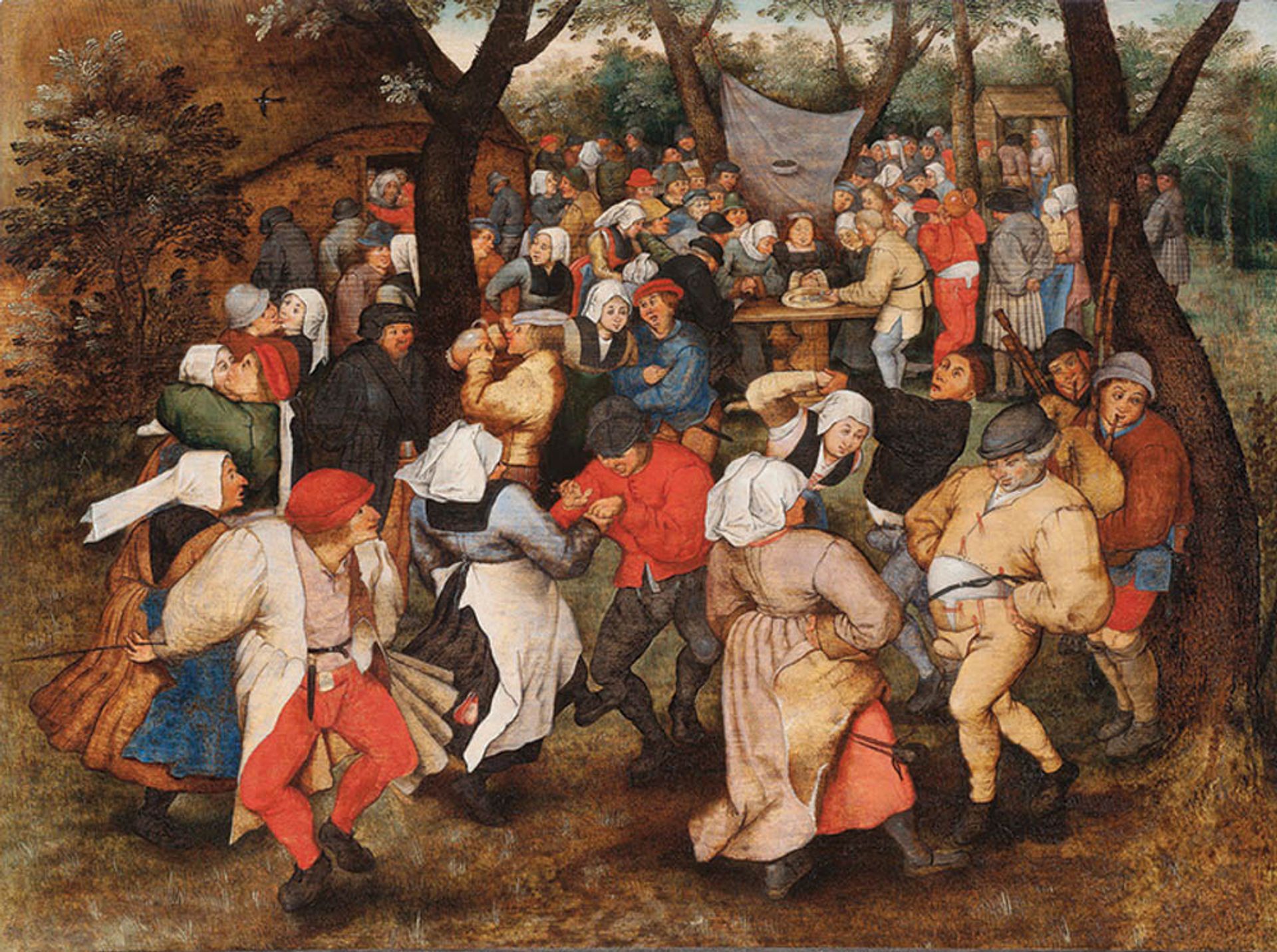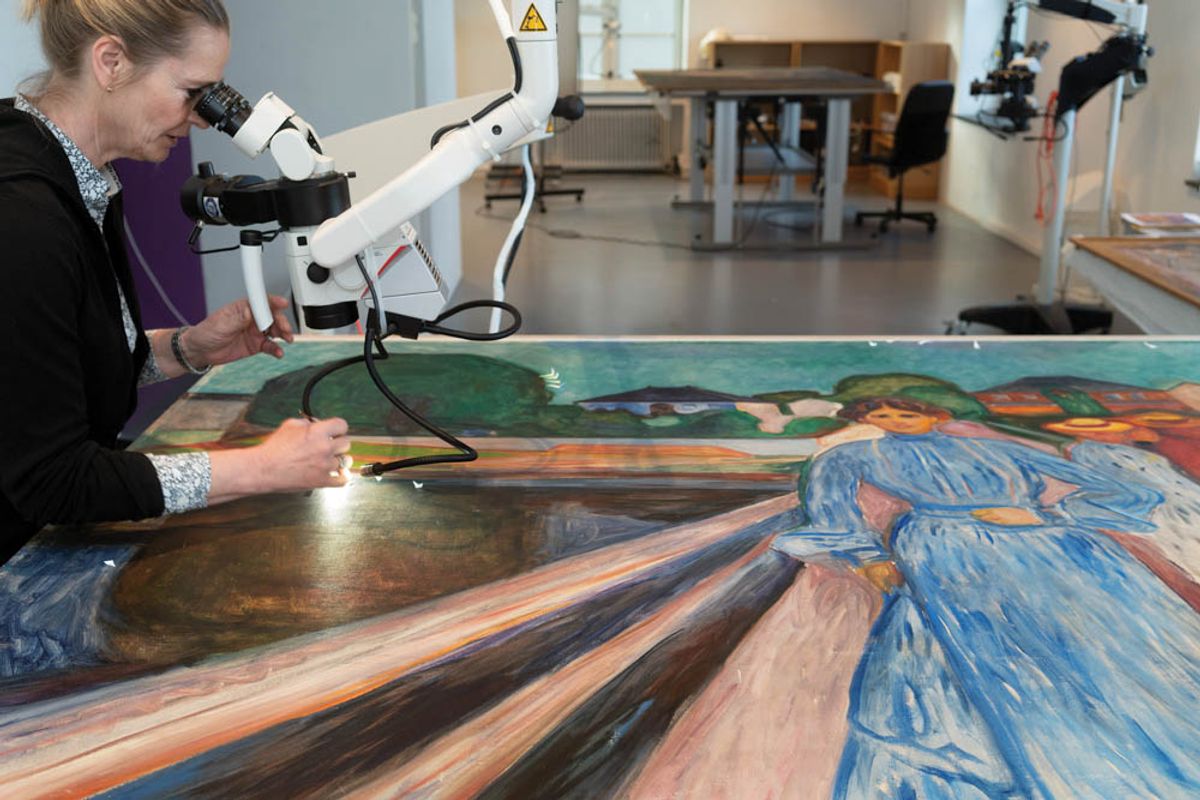Before 18 paintings by Edvard Munch are shipped from Kode museums in Bergen to a new exhibition at London’s Courtauld this month, each one will have been freed from its frame and examined in unprecedented detail. The Norwegian institution’s priority is to check that its treasures are fit for travel, to clean away dirt and discoloured varnish, and to make a detailed study of the surface.
For the Courtauld curators, hanging the show (Edvard Munch: Masterpieces from Bergen, 27 May-4 September) will be fairly straightforward. Since the works come from one collection, they share the same environmental conditions and conservation history, and the frames complement each other.
This coherence is rarely found in exhibitions made up of loans from various museums and private collections, raising the question of how curators take such conservation issues into account. Poussin and the Dance, for instance, at the J. Paul Getty Museum in Los Angeles (until 8 May), made its debut last autumn at the National Gallery in London, where The Realm of Flora (1630-31) from Dresden’s Gemäldegalerie Alte Meister appeared less legible than the brighter, cleaner paintings from British and North American collections. The Dresden picture was displayed in a separate room, with a group of earlier works.
Appearances are not always what they seem: the National Gallery says the Poussin hang was guided by chronology and unrelated to the condition of the works. “Underneath a somewhat yellowed varnish, the Dresden picture is actually in superb condition,” says Emily Beeny, the exhibition’s curator at the Getty. Still, the Los Angeles museum took action to offset the yellow with “bright, cool light” on the painting, she says. “A number of other pictures in the show—originally painted with cheaper earth colours and having lived more complicated lives—required much more help from the lighting.”
Lightening up
Adjustable LED lighting is an indispensable tool. “Institutions have different conservation practices,” says Taco Dibbits, the head of Amsterdam’s Rijksmuseum. “Sometimes you’re surprised by how different that is when you make an exhibition. And so you might put a bit less light on a very clean painting and a bit more light on a yellow varnish: you balance it a bit.” Sébastien Allard, the director of the Musée du Louvre’s paintings department, says: “In the event that a restored, or even over-restored, work must rub shoulders with a work that has not been restored, it is not possible to intervene, except sometimes by adjusting the lighting and modifying the hang.”
The National Gallery’s current Raphael exhibition (until 31 July) has a pleasingly nuanced hang, with the diverse surface appearances of the paintings softened by spacing, lighting, contrasts in scale and juxtapositions with drawings. Nevertheless, the co-curator Matthias Wivel insists that condition was not a factor in planning the displays.
Frames are another challenge facing curators. The Courtauld’s “paper hang” of an exhibition—a kind of dress rehearsal where curators place life-sized reproductions on the walls—will always include the frames. At Pallant House Gallery in Chichester, a forthcoming survey of the British portraitist Glyn Philpot (14 May-23 October) features a painting that “arrived in a very flamboyant gilt frame”, says Simon Martin, the gallery’s director. “The owner has agreed to reframe it with something a little bit more muted and more appropriate to the work.”
Idiosyncratic frames can reflect the identity of the lender. Helen Hillyard of Dulwich Picture Gallery says its founders “often seem to have found the frame first and then tried to fit the painting to it”. The variations mean loan paintings are less likely to clash. “Our collection is quite wild in terms of framing, so maybe I’m just used to it!”
Any loan carries the risk of damage, which has to be weighed against less tangible benefits. Richard Hamilton’s Hers is a Lush Situation (1958) is one of Pallant House Gallery’s most popular works and is requested for exhibitions “a couple of times a year”, Martin says, most recently for Postwar Modern: New Art in Britain 1945-1965 at London’s Barbican (until 26 June). “As guardians of a collection of 20th-century British art, I feel it’s important that we have a role [in the show] and that Richard Hamilton is well-represented by a key piece,” he says.
End of the blockbuster?
The politics of lending have intensified in recent years as the pandemic disrupted exhibition schedules and climate change is beginning to inform museum decision-making. Last December, Dibbits predicted that the Rijksmuseum’s 2023 Vermeer blockbuster will be the last of its kind. He cited pressure on museums to draw in visitors by keeping their masterpieces on the walls at home. Asked whether condition is also a significant factor, he says: “It’s decisive: the care and good health of the object is paramount.”
On the other hand, conservation can play a key part in the negotiations for a major exhibition. For lenders without the resources to carry out such treatment themselves, it is a considerable incentive if a host museum agrees to fund the restoration of the work it is borrowing. Exhibitions also provide the opportunity for scientific analysis of the sort conducted before for the Courtauld’s Munch show.
Amy Orrock, the senior curator at Compton Verney Art Gallery and Park in Warwickshire, is organising an exhibition of Tudor portraits for February 2023 that will focus on issues of attribution, making and workshop practice. It will be supported by in-depth technical analysis, which also offers a fresh way to engage the public, she says.

Conservation before a show can be decisive, revealing Wedding Dance in the Open Air to be an original by Pieter Brueghel the Younger, rather than by a follower © Holburne Museum
Orrock knows the potential impact of such investigations from her experience of curating Bruegel: Defining a Dynasty at the Holburne Museum in Bath in 2017. Conservation treatment in preparation for that show revealed that Wedding Dance in the Open Air (1607-14) was by Pieter Brueghel the Younger himself, rather than a follower. “That exhibition left a legacy for the whole museum,” she says.
There are diplomatic and practical reasons why curators generally avoid drawing attention to a painting’s appearance in exhibition-making: it is not seen as a priority for a 60-word object label. But are they missing an opportunity? Perhaps an increasing appetite among the public for behind-the-scenes insights into the conservation studio may prompt a shift from seeing paintings in purely aesthetic terms to presenting them as objects of living, material history.


